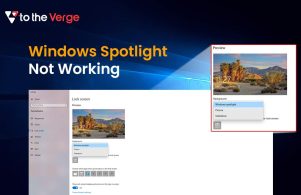In the digital world today, creating visually appealing websites is just the beginning. Although aesthetics does pull attention, data-driven optimisation maintains the interest of the visitors as well as increases conversions. This is what the online success of Australian businesses requires these days: the delicate fusion of the aesthetic and the ever productive. This is where SEO and website design need to get along well. In perfect synchronisation, there is so much more to appreciate: your website sees work in the performance, rankings, and conversion departments along with its fantastic presence.
The Shift from Design-First to Data-Driven Websites
A few years back, businesses engaged themselves in designing exquisite websites. Nonetheless, even the most beautiful designs or web pages lose value if they fail to inspire visitors or convert traffic into leads. This is when a web design firm working closely with an SEO firm can be of utmost importance.
In present times, web design involves a host of other considerations, such as experienced framed fonts, colours, and layouts, among others, to accommodate other design choices that affect User Experience, SEO and ROI.
- Imagine your website to be a super-fast car.
- The design is for bringing the eyeballs to the site.
- Visibility is due to the SEO.
And Analytics – your dash is for measuring and optimally refining performance.
Only when all three are perfectly aligned, do you get the highest possible returns from your site.
Read Also: Ways SEO Can Help Fuel Business Growth
Why Web Design and SEO Can’t Work in Silos
SEO would ensure that your site can be found by people on the search engines, whereas designing brings an attractive outlook to the interface. If these two are not synchronized, then you will have a SEO-friendly website without visitor engagement or a visually stunning website which nobody ever visits.
Here’s why both elements must work together:
- Speed and Performance: A website must be able to load quickly because page speed is the most important factor in SEO ranking. The user experience and, consequently, the search ranking are lowered by the performance-stifling heavy images, irrelevant scripts, and poorly coded pages.
- Mobile Responsiveness: More than 60% of Australians have mobile-connected computers. They make improvements on the interactive downside.
- Optimised Site Structure: An easy and intuitive navigation is good for letting the search engine read the pages of your site and thus settle into it longer.
- Visual Engagement with Technical Balance: To add beauty to visual effects, maintaining performance level is important. While optimizing images, employing alt tags, or compres sing files must be combined with SEO.
Design with Search Intent in Mind
Every design element, from headlines to call-to-action (CTA) buttons, should support the user’s intent and search journey, as a great web design agency is aware. Design and search engine optimisation agency insights are combined to align visual hierarchy, keyword usage, and content placement with user search intent.
For example:
- For a tourism website in Queensland, high-quality visuals of beaches and landmarks should be optimised for keywords such as “family holiday packages Queensland” or “Gold Coast travel experiences.”
- To rank higher in search results, a local e-commerce company could create product pages that emphasise visual appeal while optimising headings, metadata and schema markup.
This approach will ensure that the design not only attracts attention but also increases engagement and conversions while also meeting search intent.
Read Also: Top 5 AI Tools that every freelancer needs to know
Analytics: Turning Design and SEO into ROI
You must design based on data while making marketing and SEO choices to support and increase investment (ROI). Hotjar, GA, and Search Console will provide you several insights into the behaviour of users and the performance of your website.
Key metrics to monitor include:
- Bounce rate – Are visitors leaving too quickly?
- Session duration – How long are users engaging with your content?
- Conversion rate – Which pages are driving the most leads or sales?
- Traffic sources – Are visitors finding your site through organic search, paid ads, or referrals?
With your web design agency and SEO agency working in tandem, they can use such data to better optimize site structure, content and design elements. The final result? The ongoing cycle of improvement will keep the premier performance of your website up and running.
Best Practices for Integrating Web Design and SEO
- Start Collaboration Early: Ensure the involvement of SEO specialists at the initial stage of the design process to make certain that page hierarchy, URL structure, and keyword integration aspects support ranking objectives.
- Design for User Experience (UX): Furthermore, to guarantee optimal satisfaction shall clarify the expectations from B2B clients and the negotiation style that should be associated with their arrival on the site.
- Optimise for Core Web Vitals: Let mobile responsiveness, loading speed, and visual stability be given importance nowadays for greater rankings and user satisfaction.
- Use Schema Markup: Increase click-through rates and help search engines better understand your content.
- Leverage Content Placement: In gripping headlines, meta descriptions, and on-page content, those vital keywords must show up at just the right spot.
The Australian Advantage: Local SEO Meets Smart Design
A good design and externally bound SEO play the most active part in the saturated Australian-based online market. For instance, one possible value-aiding collaboration might involve making a great design with integrating “near me” keywords, map embeds, and local schema for a café in Sydney, or a tech company in Adelaide, which perhaps might showcase keyword-optimized case studies and a minimally beautiful design for B2B leads.
One achieves perceivable growth as well as sensory appeal when enrolling in the services of an expert SEO strategy and web design firm in the Australian sector.
Conclusion
Much of today’s digital success lies in the interplay between analytics and aesthetics. While a well-designed website can attract consumer traffic, with clever SEO techniques in place, they are those converts into becoming loyal customers.
In a nutshell, joined together, advanced design capabilities with data-based optimisation offer Australian brands a slew of fascinating benefits-a digital trifecta. This digital trifecta is comprised of growth through data analytics, leads via SEO, and actual attraction with design to help sustain continuous success.







![How to Update and Reinstall Keyboard Drivers on Windows 10/11 [A Guide]](https://wpcontent.totheverge.com/totheverge/wp-content/uploads/2023/06/05062841/How-to-Update-and-Re-install-Keyyboard-Drivers-on-Windows-10.jpg)
